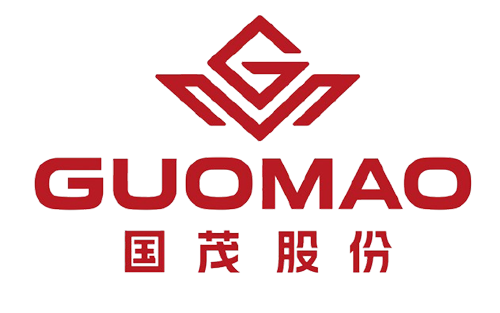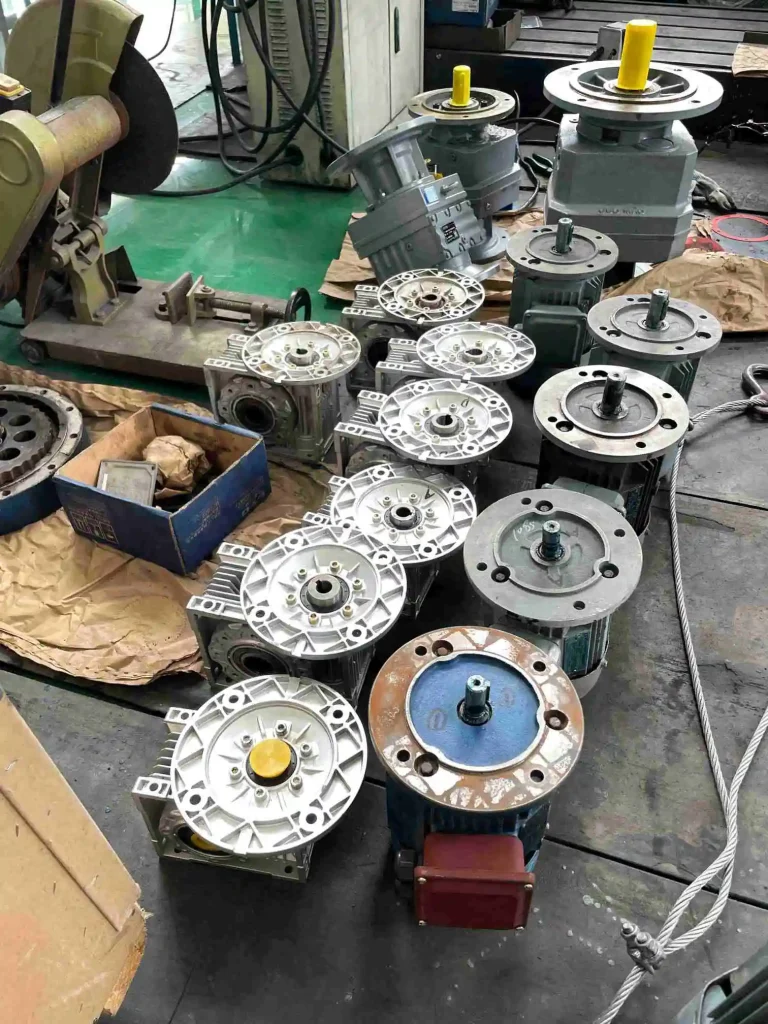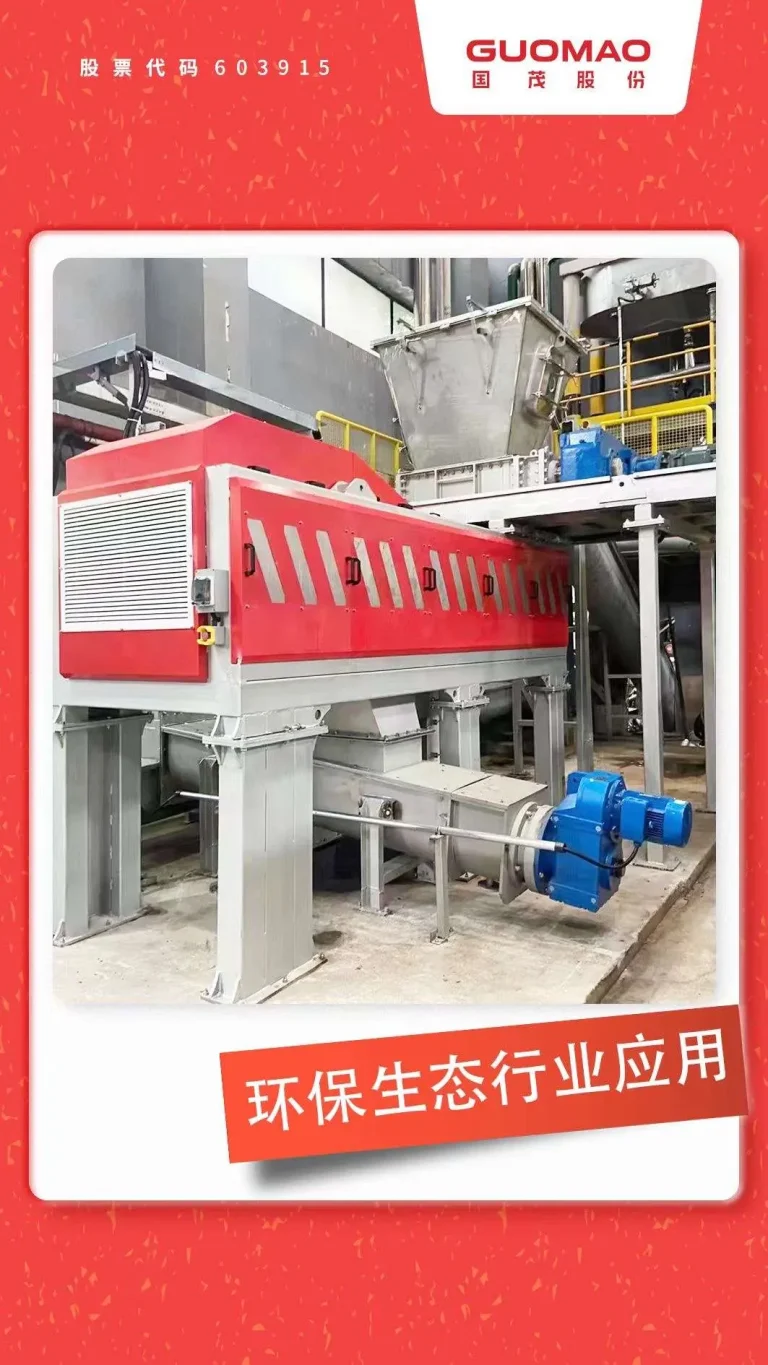Engranaje helicoidal paralelo para un funcionamiento más silencioso en aplicaciones sensibles al ruido
Hoy’ mundo de fabricación, el ruido de corte es’ t solo una bonita ventaja—it’ Es una gran victoria. A medida que las fábricas se vuelven más inteligentes con robots y automatización con cremallera, los ingenieros quieren engranajes que trabajen duro y mantengan las cosas en silencio. Los engranajes helicoidales paralelos son campeones totales aquí. A diferencia de los engranajes de espolones que chocan con los dientes con una sacudida, los engranajes helicoidales paralelos tienen dientes inclinados que facilitan el contacto. Este astuto truco reduce las vibraciones y mantiene las cosas en silencio. Para lugares donde las máquinas zumbido cerca de los trabajadores o las reglas de ruido son estrictas, esto es un cambio de juego.
- Correr sin problemas: Los dientes se mallan suavemente, sin golpes duros.
- Control de ruidoPerfecto para transportadores, líneas de embalaje y transmisiones de automóviles.
- Reducción de vibracionesSalva las piezas cercanas del desgaste adicional.
El enganche gradual de los dientes reduce la vibración y el ruido del engranaje
Imagine conducir un coche donde cada cambio de marchas hace un ruido ruidoso. Eso’ s la vida útil del engranaje de esporón. ¿Engranajes helicoidales paralelos? Ellos’ los operadores suaves. Sus dientes en ángulo se extienden en contacto con el tiempo, tocando varios dientes a la vez. ¿El resultado? Rendimiento silencioso, incluso cuando las cosas se aceleran. Es’ Es como una conversación tranquila en lugar de un grito, manteniendo las zonas de trabajo pacíficas.
Engranaje helicoidal de eje paralelo para un rendimiento silencioso de alta velocidad
Las configuraciones de ejes paralelos mantienen los engranajes girando en sincronización, estables como una roca, incluso bajo cargas pesadas. En sistemas de ritmo rápido, como transportadores con cremallera en centros logísticos o brazos robóticos en plantas de montaje, los engranajes helicoidales paralelos proporcionan una acción suave sin ralentizar. Ellos’ re el go-to para mantener las cosas rápidas pero tranquilas, sin importar el ajetreo.

Engranaje helicoidal paralelo con mayor capacidad de carga y transmisión de potencia
Tranquilo’ increíble, pero los engranajes helicoidales paralelos traen más a la mesa. Su verdadera superpotencia es manejar grandes cargas. Dado que varios dientes comparten el trabajo a la vez, las fuerzas se distribuyen uniformemente. Esto permite que estos engranajes lleven cargas mucho más pesadas que los engranajes espolones del mismo tamaño. Es’ Es como un equipo levantando una caja pesada juntos, mucho más fuerte que una persona tratando sola.
Aumento de la relación de contacto distribuye la carga de manera más eficaz
La relación de contacto de los engranajes helicoidales paralelos - cuántos dientes comparten la carga - es mucho más alta que la de los engranajes espolones. Esta característica elegante significa:
• Transmisión de torsión superior
• Reducción del desgaste en los dientes individuales
• Extensión de la vida útil
Esto es un gran problema para las industrias donde el tiempo de inactividad cuesta una fortuna, manteniendo las máquinas funcionando más tiempo y sin problemas.
Aplicaciones pesadas: Transmisiones automotrices y Cajas de engranajes industriales
Los engranajes helicoidales paralelos son la columna vertebral de trabajos difíciles:
- AutomotrizAmado en las transmisiones para cambios suaves, gran par y un viaje silencioso.
- Metalurgía y MineríaSuficientemente resistente para ciclos sin parada y pesados sin romperse.
- Transportadores pesados y grúasMantener las cosas estables en los puertos y centros logísticos.
En el futuro, eventos como Mundo de la fabricación 2025 Osaka- un gran espectáculo para piezas mecánicas y tecnología - destacará la necesidad de engranajes silenciosos y eficientes. Los engranajes helicoidales paralelos están preparados para robar el espectáculo para compradores e ingenieros que buscan sistemas de transmisión sostenibles y resistentes. Para empresas como Guomao, es’ es una oportunidad perfecta para mostrar cómo el diseño de engranajes inteligentes resuelve los desafíos de la fábrica del mundo real.
| Aplicación | Por qué se prefiere el engranaje helicoidal paralelo |
| Transmisión automotriz | Manejo silencioso, eficiente y de alto par |
| Metalurgía y minería | Resiste cargas extremas y entornos duros |
| Grúas portuarias y transportadores | Rendimiento estable en operaciones continuas |
| Robótica y automatización | Funcionamiento silencioso en sistemas de alta velocidad y precisión |
Eficiencia de engranajes helicoidales paralelos y larga vida útil en sistemas industriales
La eficiencia energética es un tema caliente en las fábricas de todo el mundo. A medida que las plantas buscan reducir el carbono y cumplir con los estándares ecológicos, incluso los engranajes juegan un papel. Los engranajes helicoidales paralelos alcanzan niveles de eficiencia superiores al 95% en condiciones normales. Su malla suave reduce la pérdida de energía por fricción, ahorrando energía y manteniendo las cosas frescas.
La malla suave reduce la fricción y mejora la eficiencia energética
Los dientes inclinados de los engranajes helicoidales paralelos hacen que las fuerzas fluyan sin problemas, evitando los movimientos sacudidos de los engranajes de dientes rectos. Esto aumenta el rendimiento de la máquina y reduce la energía necesaria para mantener las cosas funcionando. Es’ Es como deslizarse sobre hielo en lugar de caminar por el barro: menos esfuerzo, más resultados.
Materiales duraderos y geometría de precisión prolongan la vida útil del engranaje
En Guomao, fabricamos engranajes con acero aleado de alta resistencia, tratado con carburación, enfriamiento y molienda de precisión. Las superficies de los dientes alcanzan niveles de dureza de HRC58-62, haciendo que sean resistentes como las uñas bajo cargas pesadas. En combinación con la geometría spot-on, esto significa que las cajas de cambios duran años en entornos duros con un mantenimiento mínimo.

Flexibilidad de diseño de engranajes helicoidales paralelos y ventajas comparativas
Los engranajes helicoidales paralelos son’ un pony de un truco. Su flexibilidad de diseño permite a los ingenieros ajustar los ángulos de hélice, las relaciones y los tamaños para todo tipo de trabajos, desde robots pequeños hasta plataformas mineras gigantes.
Soluciones personalizables de ángulo de hélice y trenes de engranajes compactos
Al ajustar los ángulos de la hélice y las formas de los dientes, los ingenieros de Guomao pueden ajustar los engranajes para:
- Espacios estrechos con espacio limitado.
- Trabajos de alta velocidad que necesitan una sincronización perfecta.
- Tareas pesadas que anhelan el par máximo.
Esta versatilidad hace que los engranajes helicoidales paralelos se adapten tanto a configuraciones de fabricación pequeñas como masivas.
Engranaje helicoidal paralelo vs. engranaje helicoidal cruzado: ¿cuál es mejor para su aplicación?
Ambos son engranajes helicoidales, pero ellos’ No son gemelos:
- Engranajes helicoidales paralelosSilencioso, eficiente, de alta carga, ideal para ejes paralelos.
- Engranajes helicoidales cruzados: Bueno para cargas ligeras y ejes sesgados, pero menos eficiente.
Para la mayoría de los compradores que desean fiabilidad, eficiencia y resistencia, los engranajes helicoidales paralelos ganan las manos abajo.
Acerca de Guomao: Líder mundial en la fabricación de cajas de engranajes industriales
Cuando se trata de engranajes helicoidales paralelos, Guomao es un nombre que brilla brillantemente.
Perfil de la empresa: 30 años de I+ D y presencia en el mercado mundial
En Guomao, nosotros’ hemos pasado más de 30 años perfeccionando soluciones de transmisión. Con 530.000 m² de espacio de fábrica y una producción anual que supera los 400 millones de USD, nosotros’ es una gran cosa en el juego de engranajes globales. Clasificación entre China’ s Top 500 Empresas Privadas, combinamos I+amp; D, pruebas de primer nivel y fabricación de precisión para entregar cajas de cambios de confianza en todo el mundo.
Soluciones de caja de engranajes helicoidal paralela de Guomao para aplicaciones pesadas
Nuestra Motor helicoidal de eje paralelo de la serie GF son estrellas de alta tecnología. Se utiliza en:
- Metalurgia y minería.
- Tránsito ferroviario y logística portuaria.
- Ingeniería marina y proyectos verdes.
- Robótica y almacenes automatizados.
También ofrecemos los reductores de engranajes helicoidales de la serie GR, construidos para una alta eficiencia y configuraciones compactas. Esta serie ofrece:
- Amplias relaciones de transmisión para todo tipo de necesidades industriales.
- Alta resistencia y durabilidad con engranajes helicoidales de precisión.
- Tamaño compacto, perfecto para espacios estrechos en automatización y transportadores.
Juntos, los productos de Guomao ayudan a los clientes globales en las industrias pesadas y la automatización de alta velocidad.
Preguntas frecuentes
P: ¿Qué es un engranaje helicoidal paralelo y cómo funciona?
R: Un engranaje helicoidal paralelo es un engranaje con dientes en ángulo en ejes paralelos. Los dientes inclinados se mallan gradualmente, haciendo que la transferencia de potencia sea más silenciosa, suave y más eficiente que los engranajes espolones.
P: ¿Por qué un engranaje helicoidal paralelo es más silencioso que otros engranajes?
R: El ángulo de hélice permite que varios dientes se mallen lentamente y a la vez, cortando la vibración y el ruido. Esto los hace perfectos para zonas tranquilas como transmisiones de automóviles o automatización de fábricas.
P: ¿Qué industrias se benefician más de los engranajes helicoidales paralelos?
R: Las industrias que necesitan eficiencia, resistencia y funcionamiento silencioso, como la automoción, la minería, la metalurgia, la robótica, la logística y la energía verde, obtienen el máximo de estos engranajes.
P: ¿Cuánta carga puede manejar un engranaje helicoidal paralelo en comparación con los engranajes de espolón?
R: Con mayores relaciones de contacto, los engranajes helicoidales paralelos soportan cargas mucho más pesadas que los engranajes espolones del mismo tamaño, lo que los hace ideales para trabajos de alta torsión y larga vida útil.
P: ¿Qué deben buscar los compradores al seleccionar una caja de cambios helicoidal paralela?
R: Mira las necesidades de par, velocidad de entrada, condiciones de carga, ángulo de hélice, lubricación y fiabilidad del fabricante. Trabajar en equipo con nombres de confianza como Guomao garantiza el máximo rendimiento y valor.







